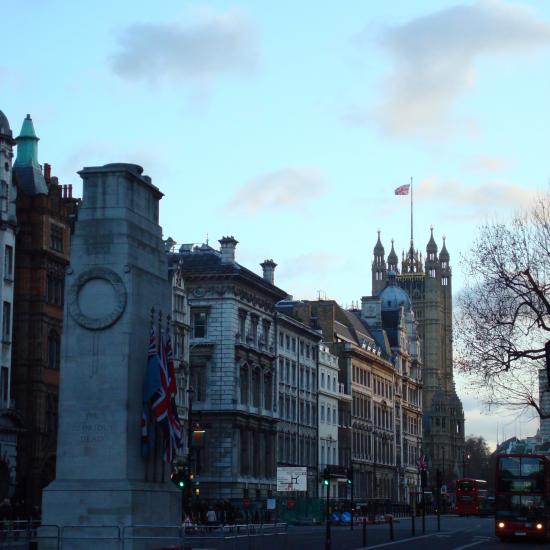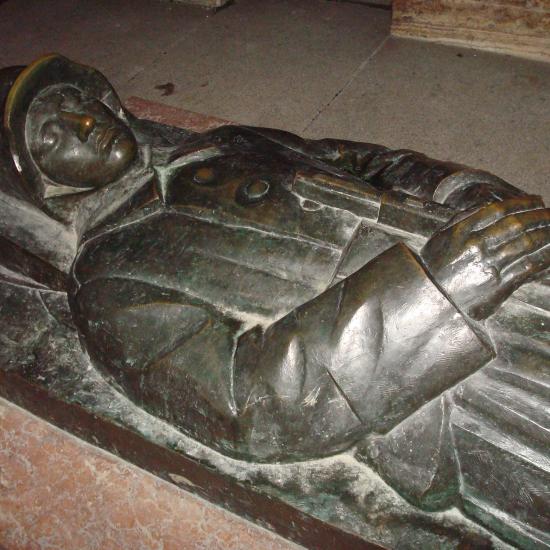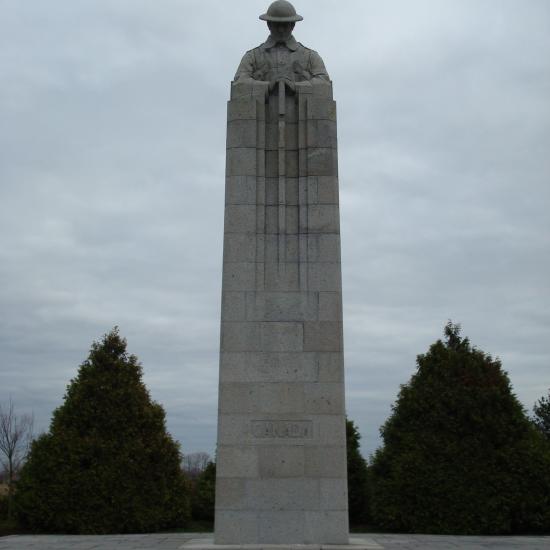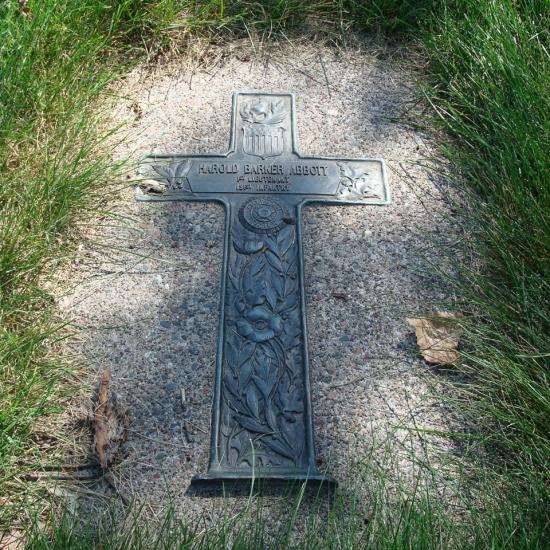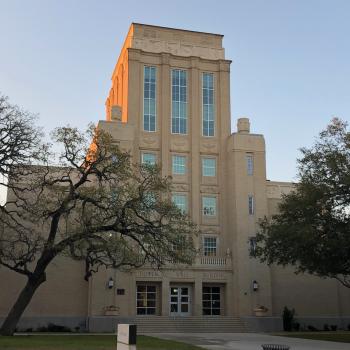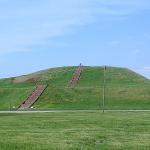It’s easy for Americans to be forgetful, dismissive, or cynical about November 11th: a federal holiday that stops the mail, closes libraries, prompts Facebook memes about veterans (but little enduring support for addressing their needs), and otherwise pales by comparison to Memorial Day. But everywhere else in the English-speaking world, today is Remembrance Day — dedicated to the kind of remembering that I last month urged for the Reformation. In the United Kingdom and its former empire, people will visit graves, lay wreaths, wear poppies, and watch parades. They’ll both fall silent and recite words like these:
They shall grow not old, as we that are left grow old:
Age shall not weary them, nor the years condemn.
At the going down of the sun and in the morning
We will remember them.
So wrote the poet Laurence Binyon, watching some of the first British soldiers march off to a war that would ultimately kill three-quarters of a million of them. Too old to offer them his life, he promised his memory: We will remember them. “And yet,” I wrote earlier in the ongoing World War I centenary, “we forget. Time marches forward, carrying our attention with it. The complicated riches of contemplating the past don’t stack up against the urgent needs of the present and the terrifying anxieties or tantalizing possibilities of the future.”
So when we mark Remembrance Day (or Veterans Day), we join our voices to Binyon’s and those of generations before who “for a hundred years have pledged themselves against their nature.” Though the fallen “have no lot in our labour of the day-time,” wrote Binyon, nonetheless “they are known / As the stars are known to the Night.”
To help prompt such remembrance of people who “sit no more at familiar tables of home,” we erect memorials — speed bumps that slow our rush into the future and turn our gaze, fleetingly, back to the past.
For example, this past Thursday ground was finally broken for a new National World War I Memorial in Washington, DC… nearly two years after the winning design was announced. But it’s not clear that the memorial will be complete by this time next year, the 100th anniversary of the Armistice: there are still debates over the design (“It’s a bit presumptuous,” one critic said of the groundbreaking), and the fundraising goal of $40 million is still far from being met.
If and when that memorial is completed, only time will tell if it retains the commemorative power of its more venerable European cousins, many of which my students visit during the travel course I help lead every other January. In honor of Remembrance Day, let me share five WWI memorials that have struck me as being especially memorable: (all photos CC BY-NC-SA 4.0 Chris Gehrz)
The Cenotaph – London, England
The most famous, most-copied World War I memorial is the handiwork of Sir Edwin Lutyens (also the architect of the monumental arch at Thiepval). Standing in front of the Foreign Office and just down Whitehall from 10 Downing and the Ministry of Defence, the stone slab effectively makes (in historian Jay Winter’s words) “all of ‘official’ London into an imagined cemetery.” Controversial for its sparse symbolism, Lutyens instead erected what Winter called “a form on which anyone could inscribe his or her own thoughts, reveries, sadnesses.” So while it has no overtly religious symbols or inscriptions, it always turns my thoughts to Resurrection — since cenotaph is Greek for “empty tomb.”
The Bavarian War Memorial – Munich, Germany
Resurrection also came to mind when we visit the last WWI memorial on our trip. Resting in front of the local state government in Munich, Bavaria’s Kriegerdenkmal is easy to miss: sunken into a seven-foot deep pit, the top of its crypt barely rises about the level of the surrounding Hofgarten. As at the German cemetery in Langemark, Belgium (many of whose fallen were named here, on engravings destroyed by Allied bombing in World War II and never restored), one descends to the dead when visiting the memorial. But the western wall of the memorial is inscribed “Sie werden auferstehen.” At first, I wanted to translate that phrase as “They will be resurrected.” But given that the crypt houses a statue of a “sleeping soldier” and is overseen by the statue of an older warrior, I think that “they will rise again” takes on a different, less hopeful meaning.
The Brooding Soldier – St. Julien, Belgium
As Binyon predicted, the Commonwealth dead of WWI “sleep beyond England’s foam,” in dozens of cemeteries all over the Western Front. So there are few places on Earth more densely populated with commemorative structures than the former Western Front. One of the most impressive is the Canadian National Memorial outside Vimy, France, but an even more moving memorial from that nation stands across the border in Flanders, the Belgian province whose poppy-red, cross-marked fields were made famous by a Canadian doctor. Instead of erecting a more typical obelisk, the Canadian government commemorated the 1st Canadian Division by commissioning a statue to stand near the spot where those troops fought back the first German chemical weapons attack, in April 1915. (It’s not far from the site of Passchendaele, the terrible battle whose 100th anniversary Canadians just observed.) Known as “The Brooding Soldier,” war veteran Frederick Chapman Clemesha’s 36-feet tall statue somehow turns cold granite into something warm and tender: the moment when a soldier who has just buried one of his comrades rests his hands on his upturned rifle and pauses to mourn, remember, and (perhaps) pray.
Victory Memorial Drive – Minneapolis, Minnesota
Finally, an example of the “living memorials” that are so distinctive of American commemoration. While it took a Second World War to popularize this approach, even in the wake of WWI architects like Martha Candler were already arguing that “mere shafts of granite and statues of bronze, be they ever so artistic, are inadequate to express the tribute we would pay to our soldiers of democracy.” That didn’t stop hundreds of towns from erecting copies of E. M. Viquesney’s “Spirit of the American Doughboy.” (145 of still stand.) But several cities decided instead to remember the war by spending money on something more useful: e.g., a football stadium in Chicago, an opera house in San Francisco, a swimming pool in Honolulu, and a 3.8-mile parkway in Minneapolis.
Actually, Victory Memorial Drive is only partly about the road and surrounding green space. The original memorial included hundreds of trees, planted jointly by war veterans and schoolchildren and spaced out by plaques naming the honored dead of Hennepin County. “[A]s these trees grow,” said one speaker at the 1921 dedication ceremony, “so will memories of these men and women who died in the cause of liberty grow through all generations.” (Unfortunately, those trees ended up victims of Dutch elm disease and have been replaced.)


